The smart glass 'Ray-Ban Stories' jointly developed by Facebook with Ray-Ban is now available, and what is its usability?

On September 9, 2021, Facebook released the smart glasses 'Ray-Ban Stories ' jointly developed with the eyeglass maker
Ray-Ban and Facebook introduce Ray-Ban Stories, first-generation smart glasses
https://tech.fb.com/ray-ban-and-facebook-introduce-ray-ban-stories-first-generation-smart-glasses/
Ray-Ban Stories: hands-on with Facebook's first smart glasses --The Verge
https://www.theverge.com/2021/9/9/22662809/facebook-ray-ban-stories-camera-smart-glasses-hands-on
Mark Zuckerberg on Facebook and Luxottica's RayBan Stories
https://www.fastcompany.com/90673958/facebook-smart-glasses-ray-ban-stories-luxottica
In September 2020, Facebook announced that it would develop smart glasses in partnership with Luxottica and launch them in 2021. Facebook, the smart glass and 'replace the smartphone AR (augmented reality) smart glass' has positioned .
Facebook's collaborative smart glasses with Ray-Ban will be launched in 2021-GIGAZINE

by Stefan Sager
◆ Review by The Verge
And on September 9, 2021, Facebook released the smart glasses 'Ray-Ban Stories'. The Verge, who reviewed Ray-Ban Stories, points out that the most important point is that 'glasses that look and are easy to use'.
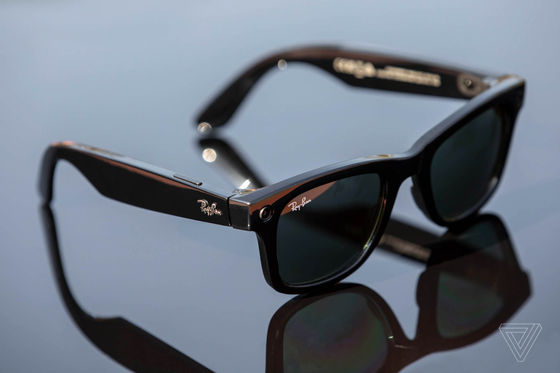
You can see how Ray-Ban Stories looks like ordinary glasses by comparing with the following '
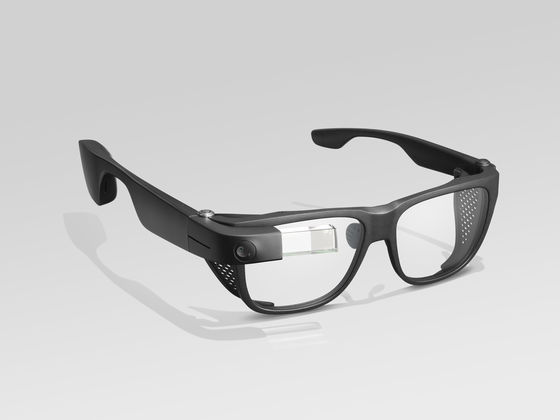
The frame is equipped with two cameras with 5 megapixels, which can take pictures and videos of up to 30 seconds.
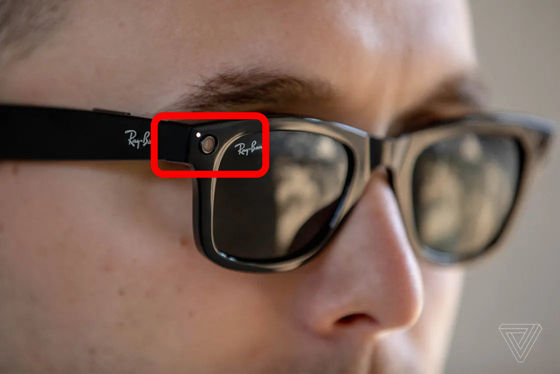
Photos taken with Ray-Ban Stories can be imported to your smartphone using the Facebook View app released on iOS and Android, edited and uploaded to Facebook, Instagram, etc.
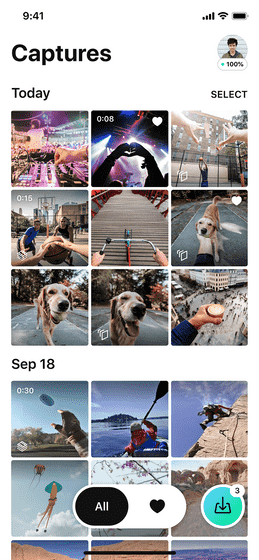
The glasses come with a carrying case made of a leather-like material that allows you to charge Ray-Ban Stories three times with the built-in battery and the included USB Type-C cable. Facebook explains that a Ray-Ban Stories battery takes an hour to fully charge and can run for about six hours with intermittent usage. In fact, when the reviewer of The Verge used it frequently for about an hour, the battery was reduced by about 20%.
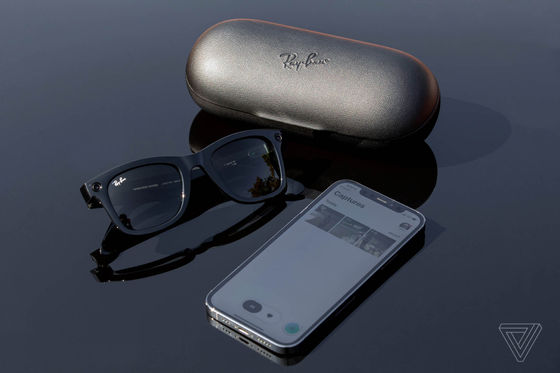
There are speakers on both sides of the frame that allow you to connect to your smartphone via Bluetooth to make calls and watch podcasts. Of course, you can play music, but The Verge says, 'If you want to listen to music, you want proper headphones,' and it seems that sound quality is not being pursued. It has also been pointed out that the speakers are not oriented towards the wearer's ears, so the sound gets into the ears of nearby people.
Overall, The Verge said, 'What I found most appealing about Ray-Ban Stories was its shape. I've tried many smart glasses, and it's the most comfortable to wear. It's heavy. It's only a few grams heavier than regular traveler sunglasses, and you can use it instead of glasses if you have a prescription lens. '
◆ Review by Fast Company
The Fast Company, on the other hand, focused on Ray-Ban Stories cameras.
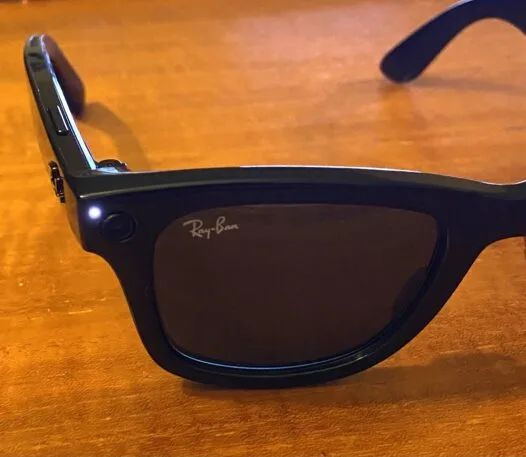
The following is an example of Ray-Ban Stories. According to the Fast Company, Ray-Ban Stories's photos are blurry, and the movement isn't very snappy, such as taking a few seconds to start the camera, so it was difficult to accurately frame the subject.

By linking Ray-Ban Stories with the Facebook View app, you can add 3D-like effects to your photos. If you click the thumbnail below, you can see how it is actually made into 3D with a GIF animation.

By making it 3D, you can get closer to the man riding the bicycle in the center, but there was also a phenomenon that the left man's neck was cut off.
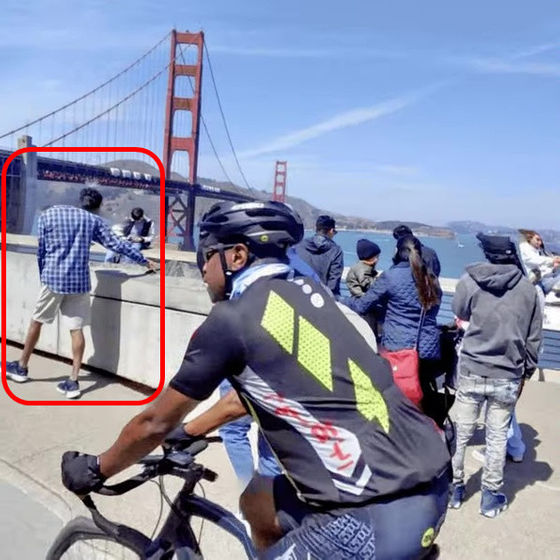
He also felt that the storage capacity and battery capacity were insufficient. Fast Company points out that 'If you want to take more than that, you need to transfer it to your smartphone and use it while securing capacity' because 35 videos with a maximum of 30 seconds can be saved and only 500 photos can be saved. .. Furthermore, when Fast Company used Ray-Ban Stories while cycling, it seems that the battery was used up in 2 hours.
From this point of view, the Fast Company commented on Ray-Ban Stories' camera performance, 'I felt the possibility, but it was still quite immature, and rather it made me realize once again how high-performance smartphone cameras have become.' I commented.
◆ Summary
The Ray-Ban Stories released this time does not have an AR function, but Facebook has positioned the current Ray-Ban Stories as the 'first generation' and plans to implement an AR function in the future.
Ray-Ban Stories is priced at $ 299 and is available online as well as in Ray-Ban stores in the United States, Australia, Canada, Ireland, Italy and the United Kingdom. However, at the time of writing the article, it is not possible to place an online order from Japan, and it is undecided whether or not it will be deployed in Japan and when it will start selling.
ray-ban stories
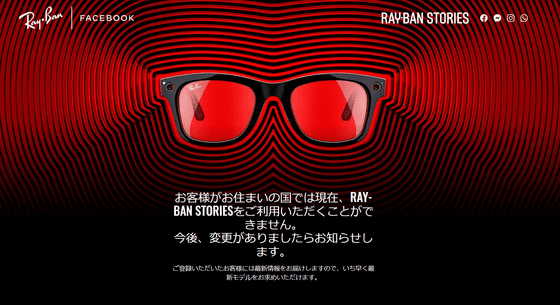
Related Posts:
in Hardware, Posted by log1l_ks







